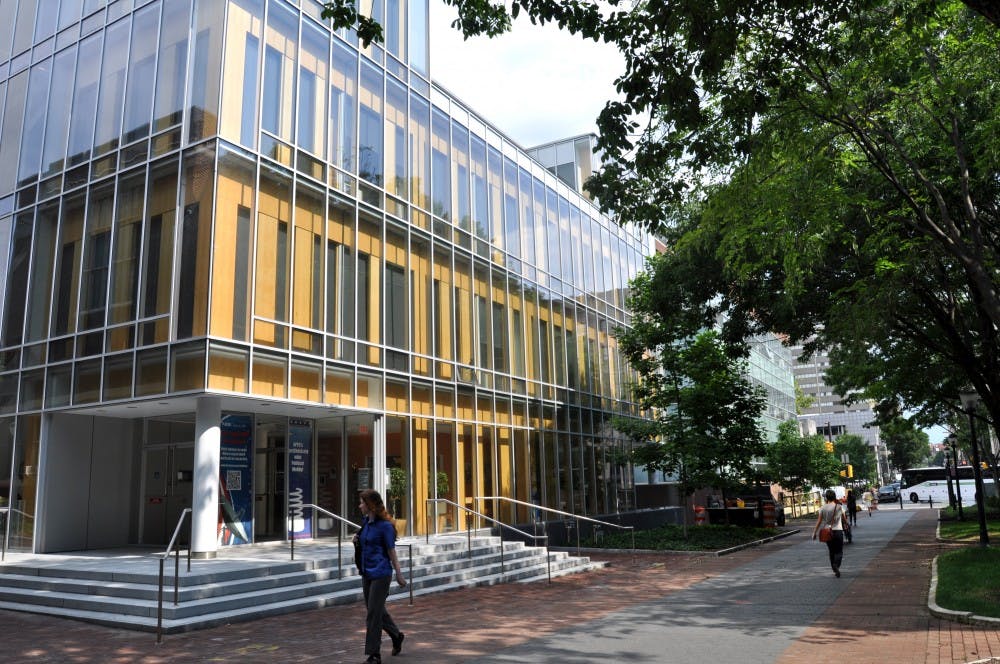Ever since the first televised U.S. debate between Presidents John F. Kennedy and Richard Nixon in 1960, presidential debates have increasingly become a centerpiece of general elections every four years.
Despite the historical endurance of the debates, it is safe to say that the American demographic and media landscapes have changed significantly since the 1960s.
Last week, the Annenberg Debate Reform Working Group from Penn’s Annenberg Public Policy Center released a 48-page report recommending modifications in the format of presidential debates to better adapt to changing times, increase accessibility and enhance the quality of debate.
“The current structure is not really a debate, it’s a joint press conference heavily moderated by a reporter and in an environment in which the product is branded and edited by a major network,” said Kathleen Hall Jamieson, director of the APPC and lead member of the Working Group.
The bipartisan report — titled “Democratizing the Debates” — calls for a reconsideration of the moderator's role. It proposes limiting the moderator to keeping candidates accountable to their speaking time and calls for enlarging the pool of moderators to include print journalists and other experts, rather than just TV journalists. To avoid biases, the report suggests prohibiting the moderator from asking follow-up questions and encourages them to promote a more inclusive process in the formulation of questions and debate topics.
The report also proposes eliminating on-site audiences for debates except for one town hall-style debate.
“We think the live audience has to go,” said Jamieson. “We think it creates a risk because the audience’s response can change the view of people at home. We’ve shown that this can happen, both historically and through our experiments.”
The Working Group also encourages the adoption of a “chess clock” model so candidates can challenge each other’s statements and have the liberty of going more in-depth on the issues they feel strongly about. Under this model each candidate would be allotted 45 minutes of speaking time and anytime a candidate is speaking the candidate’s clock would visibly count down. It would be at the candidate’s discretion to decide how much time to dedicate to a particular answer.
"When candidates are asked to answer very complex questions in a minute and a half it can be very frustrating,” said Beth Myers, former senior advisor to Mitt Romney’s 2012 presidential campaign and co-chair of the Working Group.
The report acknowledges how the U.S. has shifted from an era where 90 percent of television viewers watched only three networks to one dominated by increased options in television networks, the advent of the internet and the rise of social media outlets. This new era has witnessed an increased political influence from millenials and the the growth of independent and Latino constituencies. However, the report cites Nielsen data showing that the percent of TV households viewing the debates has declined from 60 percent in 1960 to about 38 percent in 2012.
To broaden the debates’ reach, the Working Group proposes streaming debates online and offering them through more diverse media platforms such as the Latino-targeted networks Univision and Telemundo.
However, the implementation of many of the report’s recommendations faces a set of challenges.
In the manner debates are currently set up, a television network bears production costs because it brands the live debate on its channel and gets to feature one of the network’s TV personalities as the moderator. There could be less incentives for a network to finance the debate if one of its journalists is not the moderator or if it has to share its video feed with other media outlets.
“You’ve got to find an alternative way to finance the debate process or you’ve got to find a network willing to host the debate and also make the content available to other people who are its competitors,” said Jamieson. “So the big challenge now is how you finance this.”
Moreover, presidential debates are usually held at universities, which cover some of the production costs as well. On most occasions the audience is made up of the candidates' and host university’s donors. With a ban on live-audiences, universities might have trouble hosting the debates if its donors are not allowed to attend the event.
“What we looked at is a way for the debates to be a lot less expensive, by not going to the universities, by doing them in a single studio, with a feed that could be used by many different outlets,” said Myers. “I think the first step is to ‘de-specticalize’ the debates and make them smaller events that are more affordable and available to more people.”
Both Jamieson and Myers agreed that persuading candidates to accept format changes will not be as complicated an issue as figuring out how to finance a debate model with less incentives for networks and host universities.
Although challenges loom ahead, the Working Group’s report has garnered a lot of exposure in media outlets during the past week. The report is notable for including scholars and political experts with experience on Republican and Democratic campaigns alike. Alongside Myers, the 16 member Working Group was co-chaired by Anita Dunn, former White House Communications Director and senior advisor to President Obama’s presidential campaign.
“Its something I’m really proud of because it’s a really good effort between people, that frequently don’t agree on things, who came together and really put together a great product,” Myers said.
The full report can be found online.



